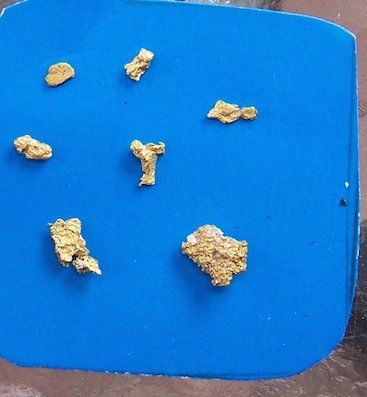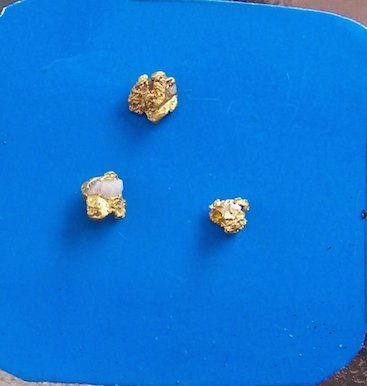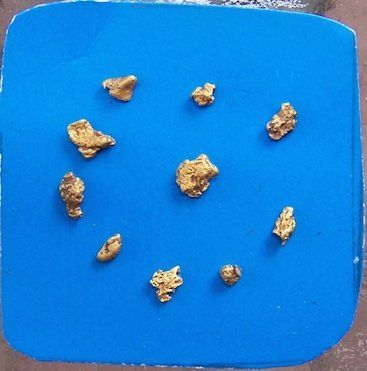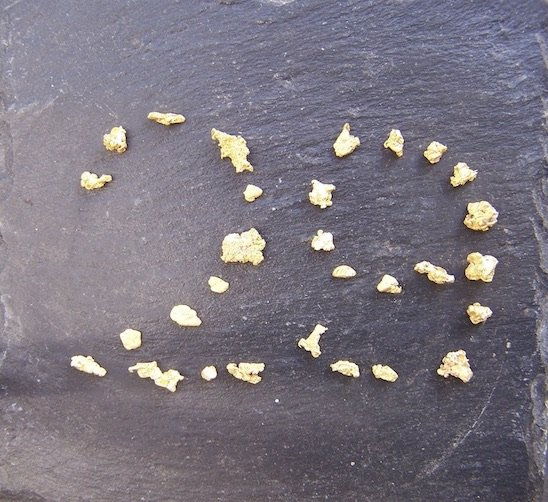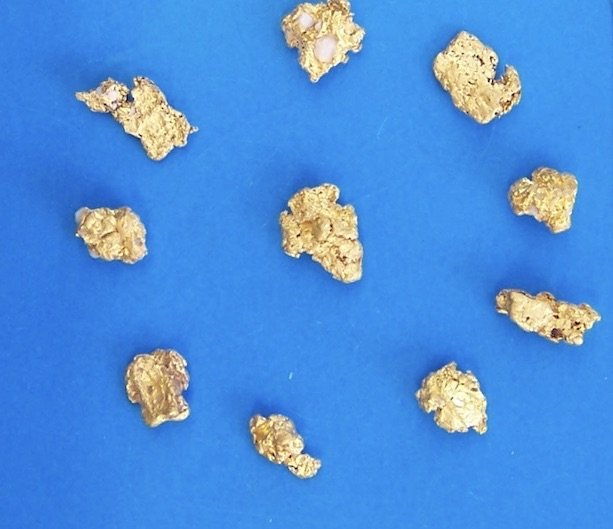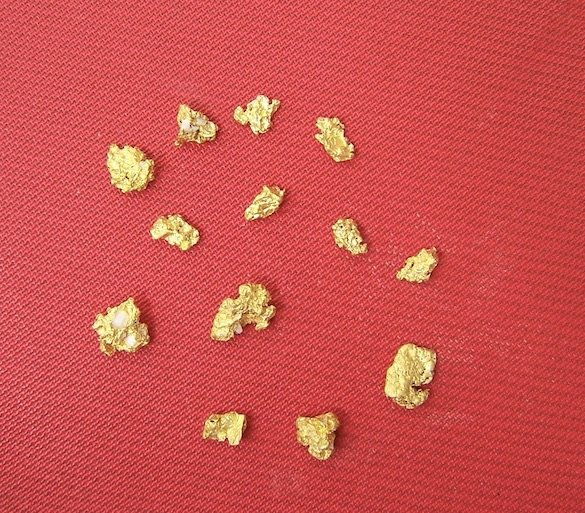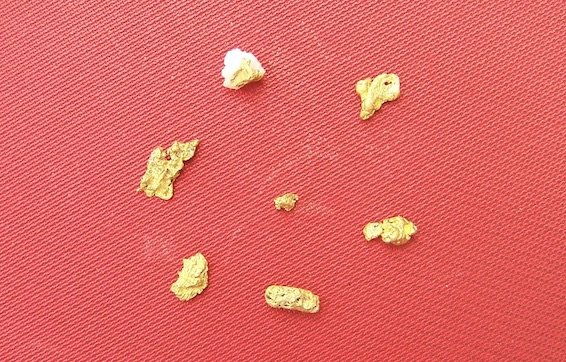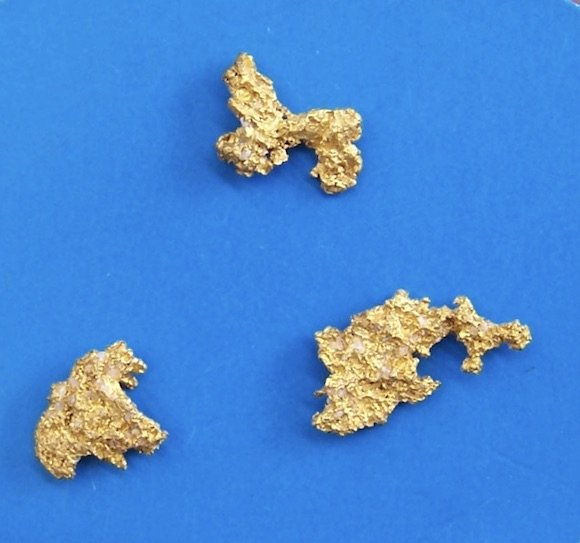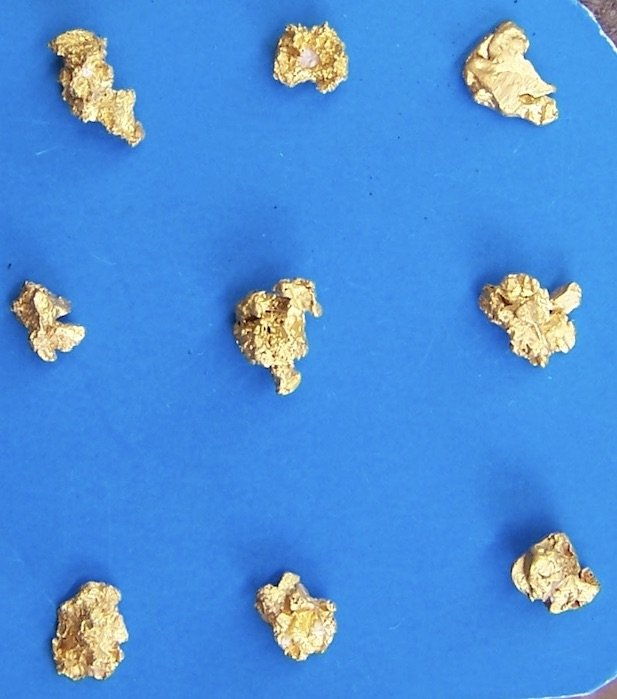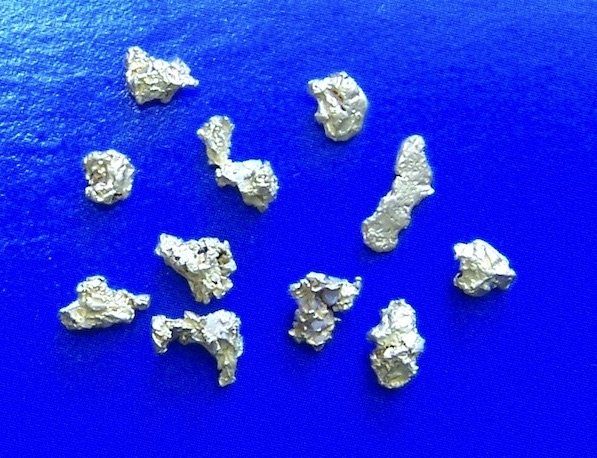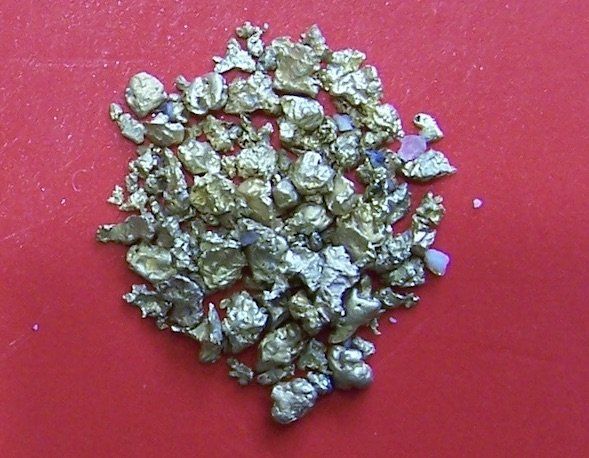I did get out to 'Mystery' Reef and it was an interesting day!
Friday 6th October
I think I gave the 'pudding' its last cut today. Raking and detecting for two hours turned up nothing, not one target. The soil and rock seemed to change the deeper I went. There was a lot less rock with the vein that has contained the gold. I was keen to get the milestone of 100 bits with the Eureka but it just wasn't happening. I conceded that it was time to restore the heap and move on. While restoring the heap I couldn't resist detecting where I was removing the dirt and where I was spreading it. It made the repair work slow but it was worth it. I forgot something today, a microscope. No I don't own one, just a lame joke. If last week's finds were classed as 'minuscules' then these five bits are 'microscopics'. I ended up with five bits, three clean pieces and two specimens. So the Eureka is now a centurion finding 100 small bits. I could probably scrape more out of the 'pudding' but it's time to get to know the SDC. I gave it a run as well but it cannot detect these tiny fragments, and it couldn't find last sessions lot either even when they were recovered targets sitting on top.
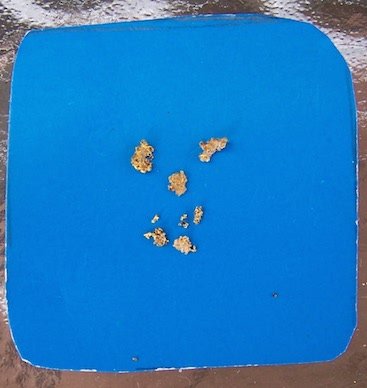
My 100th bit is the one in the middle. It is also my smallest bit ever at 0.012 grams. The two at the top were the other clean pieces found and the dust at the bottom came from the two specimens. All up 0.133 grams. Even though there are more bits in the photo they only count as five targets or bits. So time to look for new ground. The 'pudding' has provided a lot of fun over the last three months yielding over 80 bits for around 6 grams. I did take a hammer and explored some of the larger rocks that showed potential but no luck on that angle. So the 'Mystery' Reef saga is done for now and my plan is to explore some new areas with the SDC but I will be mindful that the Eureka is still a valuable part of my detecting team.
Cheers Bob
Friday 6th October
I think I gave the 'pudding' its last cut today. Raking and detecting for two hours turned up nothing, not one target. The soil and rock seemed to change the deeper I went. There was a lot less rock with the vein that has contained the gold. I was keen to get the milestone of 100 bits with the Eureka but it just wasn't happening. I conceded that it was time to restore the heap and move on. While restoring the heap I couldn't resist detecting where I was removing the dirt and where I was spreading it. It made the repair work slow but it was worth it. I forgot something today, a microscope. No I don't own one, just a lame joke. If last week's finds were classed as 'minuscules' then these five bits are 'microscopics'. I ended up with five bits, three clean pieces and two specimens. So the Eureka is now a centurion finding 100 small bits. I could probably scrape more out of the 'pudding' but it's time to get to know the SDC. I gave it a run as well but it cannot detect these tiny fragments, and it couldn't find last sessions lot either even when they were recovered targets sitting on top.

My 100th bit is the one in the middle. It is also my smallest bit ever at 0.012 grams. The two at the top were the other clean pieces found and the dust at the bottom came from the two specimens. All up 0.133 grams. Even though there are more bits in the photo they only count as five targets or bits. So time to look for new ground. The 'pudding' has provided a lot of fun over the last three months yielding over 80 bits for around 6 grams. I did take a hammer and explored some of the larger rocks that showed potential but no luck on that angle. So the 'Mystery' Reef saga is done for now and my plan is to explore some new areas with the SDC but I will be mindful that the Eureka is still a valuable part of my detecting team.
Cheers Bob




